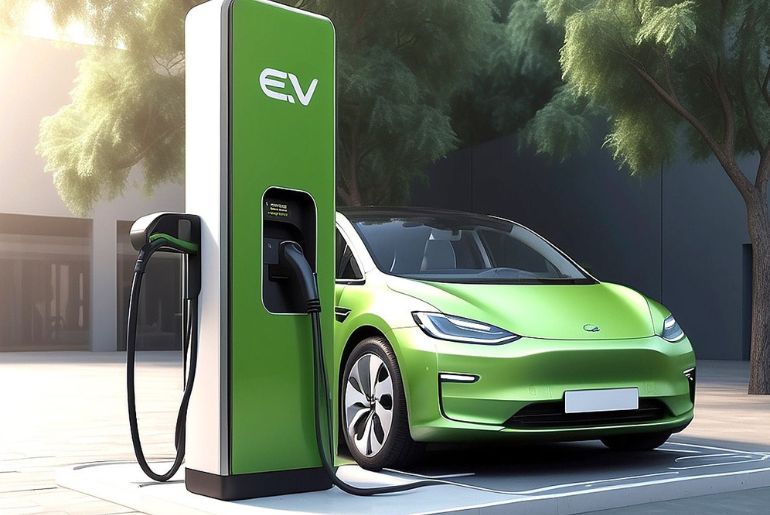India’s electric vehicle (EV) industry is experiencing significant growth, driven by government initiatives, technological advancements, and a rising awareness of environmental sustainability. While the global EV market continues to expand, India’s progress presents a unique narrative shaped by its distinct challenges and opportunities.
Current Status of India’s EV Industry
In 2024, electric vehicles accounted for approximately 2.5% of all cars sold in India. This modest figure is attributed to factors such as higher upfront costs and limited charging infrastructure. However, the landscape is rapidly evolving. In 2023, EV sales in India surged by 49.25%, reaching 1.52 million units. Projections indicate that by this year (2025), production of battery-powered passenger vehicles will increase by 140.2% year-over-year to about 301,400 units, representing around 6% of the estimated 5.16 million passenger vehicles produced that year.
Government Initiatives Driving Growth
The Indian government has launched several programs to promote EV adoption:
-
Faster Adoption and Manufacturing of Hybrid and Electric Vehicles (FAME) Scheme: Introduced in 2015, with FAME II commencing in April 2019, this initiative focuses on electrifying public and shared transportation.
-
Production Linked Incentive (PLI) Scheme: Launched in September 2021, it aims to boost domestic manufacturing of advanced automotive technology products and attract investments.
-
Import Duty Reductions: In March 2024, the government reduced import duties for EVs priced over $35,000 from 100% to 15%, encouraging local manufacturing.
-
Battery Production Incentives: The Union Budget 2025 extended customs duty exemptions to 35 additional capital goods essential for EV battery production.
These measures reflect India’s commitment to achieving its target of 30% EV penetration in passenger vehicle sales by 2030.
Comparison with Global EV Leaders
Globally, the EV market is witnessing robust growth. In 2023, the market was valued at $255.54 billion and is projected to reach approximately $2,108.80 billion by 2033, growing at a compound annual growth rate (CAGR) of 23.42%.
China stands out as a dominant force in the EV sector. Companies like BYD have surpassed traditional leaders such as Tesla, reporting $107 billion in revenues for 2024. BYD’s success is attributed to affordable vehicles and innovative technologies like super-fast charging systems.
In contrast, the United States and Europe are experiencing fluctuations. Tesla’s sales in Europe declined by 40% in February 2025 compared to the previous year, despite a 26% rise in overall EV sales. Factors such as political controversies and increased competition have influenced this trend.
Challenges Facing India’s EV Industry
Despite the positive trajectory, several challenges hinder India’s EV ambitions:
-
High Initial Costs: EVs in India are typically priced 20-30% higher than their internal combustion engine counterparts, deterring potential buyers.
-
Charging Infrastructure: In February 2024, India had 12,146 operational public EV charging stations. To support the anticipated growth, at least 1.32 million charging stations are needed by 2030, requiring over 400,000 installations annually.
-
Policy Consistency: Several state EV policies are nearing expiration, which could affect investor confidence and slow momentum.
-
Localization of Manufacturing: India’s reliance on imported components and batteries impacts cost dynamics. While policies promote localization, progress has been slower than expected.
Future Prospects
The future of India’s EV industry appears promising. The government aims for 80 million EVs on Indian roads by 2030. Additionally, states like Maharashtra and Karnataka have set ambitious targets for EV adoption in new vehicle registrations and cargo vehicle electrification, respectively.
Automakers are responding with plans to launch new EV models featuring longer ranges and faster charging times. Collaborations, such as Indian state firms seeking stakes in lithium projects in Australia, aim to secure essential resources for battery production.
Conclusion
India’s EV industry is at a pivotal juncture. With strategic government policies, increasing investments, and growing consumer interest, the sector is poised for substantial growth. Addressing challenges related to cost, infrastructure, and policy consistency will be crucial for India to realize its vision of a sustainable and electrified transportation future.

